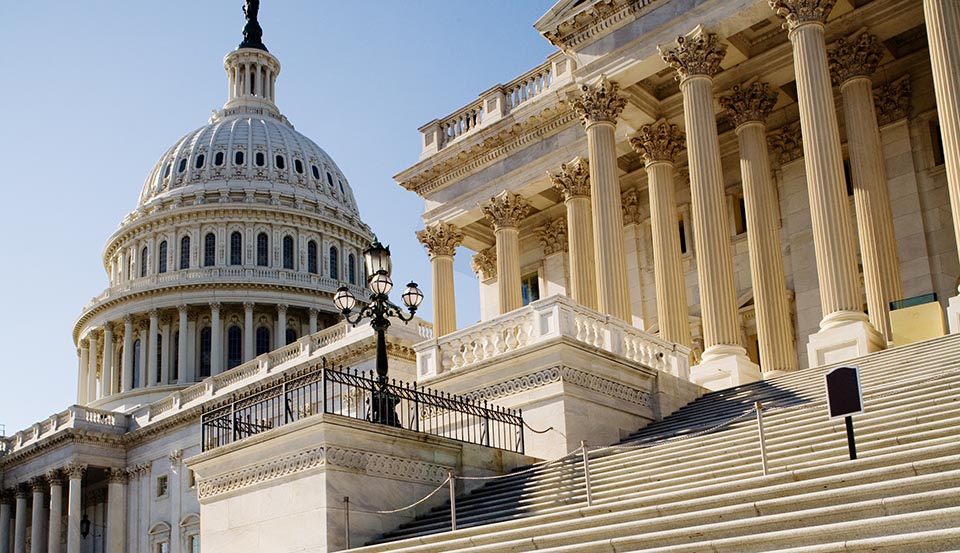Here’s what lenders need to know about how it protects tenants and landlords.
On Aug. 31, 2020, AB 3088, known as the Tenant, Homeowner, and Small Landlord Relief and Stabilization Act of 2020, was signed into law. The law went into effect immediately.
AB 3088 is an omnibus bill that incorporates many smaller tenant and landlord protection bills. The American Association of Private Lenders and its general counsel, Geraci LLP, fought the passage of these bills, which included AB 828, AB 2501 and most recently AB 1436. The bills failed to pass individually.
The previous legislation included foreclosure moratoriums, mandatory lender forbearances, and a litany of other attacks on the mortgage lending industry. Due to the combined efforts of AAPL, Geraci and other reputable mortgage associations, AB 3088 did not include many of the harsher measures. The action it does take will likely have minimal impacts to many private lenders.
The outcome of the act is especially reassuring for those concerned about the possible snowball effects of such legislation. California law is traditionally stricter on the mortgage lending industry than other states. The fact that only a watered-down version of the proposed legislation passed in California, even in the midst of the pandemic, sends a message to other states watching the law’s progression and planning their own responses.
AB 3088 Highlights
The main takeaways from AB 3088 are as follows:
There is no mandatory forbearance requirement.
- If a covered borrower requests a loan forbearance, the lender/loan servicer may deny the request as long as the lender/servicer provides the reason(s) why the request was denied along with any curable defects in the request. For example, if the denial is based on the fact that the borrower failed to provide bank statements to demonstrate hardship, then the lender needs to state the request will be reconsidered upon receipt of bank statements.
- A covered borrower is an individual borrower or entity borrower (so long as the entity is not a corporation, or an entity owned by a corporation) with a loan secured by 1-4 family property. This requirement applies to business purpose and consumer loans.
California expanded its Homeowner’s Bill of Rights (HBOR).
- Previously, first position consumer mortgage loans were required to go through a notification period with the borrower before recording a Notice of Default. The lender had an affirmative duty to attempt to notify the borrower of their default and potential to lose the property through foreclosure.
- This legislation expands the early intervention notification requirements to all loans secured by 1-4 family properties that are occupied by tenants if the tenants are unable to pay rent due to a reduction in income related to COVID-19.
- Generally, compliance with HBOR adds 30-60 additional days to the California foreclosure process.
There are no foreclosure moratoriums anywhere in the bill.
- Mortgage lenders may continue to foreclose in California but will need to comply with additional notice requirements under HBOR for 1-4 family residential property occupied by tenants.
AAPL and Geraci Objections Considered
Previous to the passage of AB 3088, AAPL and Geraci LLP submitted a letter of objection regarding AB 1436 to the bill’s sponsor, assembly member David Chiu. The bill sought to make all borrowers with loans secured by 1-4 unit residential property automatically eligible for 12 months’ forbearance. The only requirement was a statement of hardship from the borrower, with no underlying proof or documentation needed.
Although AAPL forbearance guidelines during this time lay out recommendations when borrower hardship is proven (aaplonline.com/covid19), a bill that effectively requires no hardship in order to gain forbearance would have decimated private lending companies, ended capital investment that is slowly coming back to the state, and amplified the impacts of COVID-19 as capital remained locked in business-purpose loans rather than moving through the housing economy.
In the objection letter, AAPL and Geraci LLP requested the definition of the secured collateral be changed to “the principal residence of the borrower.” The new language would have protected California’s primary concern—consumer borrowers and their homes—while exempting most business-purpose loans made by private lenders.
The AB 3088 omnibus bill that included elements of AB 1436 took many of AAPL and Geraci’s objections into consideration although our final recommendation of changing the definition ended up being moot as the passed legislation had no mandatory forbearance requirement whatsoever.
The complete text of the letter is reprinted on the next page. ∞
Re: Assembly Bill 1436 – The Homeowner, Tenant, and Small Landlord Relief Act of 2020
American Association of Private Lenders Background
American Association of Private Lenders (“AAPL”) is a national association comprised of non-depository, non-government agency mortgage lenders, brokers and service providers whose purpose is to provide liquidity to underserved and underbanked real estate investors. Unlike typical bank financing, private lenders commonly provide short term financing also known as bridge financing to professional real estate investors and small businesses who professionally invest in real estate nationwide.
Typical Financing Provided by AAPL Members
A common example of the relationship between private lenders and their borrowing constituency is the purchase of an investment property which requires light to significant rehabilitation to be marketable before it can be sold to aneventual homeowner. Banks are reticent to make this type of loan as the property is not stabilized, often uninhabitable, and rarely generates any cash flow due to its state of disrepair.
Private lenders primarily make business purpose loans to individual and entity borrowers. Whereas banks and other depository institutions, primarily focus on providing mortgage loans to individuals primarily for personal, family or household use, secured by the principal residence of the individual consumer.
AB 1436 and its Unintended Impact on Private Mortgage Lenders
As a preliminary matter AAPL applauds the California legislature and its intent “to avoid widespread economic and social harm by establishing a timeline and framework for tenants, homeowners, and small landlords to defer payments temporarily until after the public health emergency passes and the financial consequences begin to ease.”
The intent of the statute appears to provide homeowners an ability to quickly and easily require their mortgage lender to enter into a forbearance related to their primary residence. Additionally, the statute appears to desire to provide multifamily borrowers an ability to potentially enter into a partial loan forbearance provided that they provide sufficient evidence of hardship.
The difference in approach of treatment of multifamily borrowers and homeowners makes sense. A multifamily borrower should have to provide evidence of hardship and should provide their net operating income to the mortgage lender even if that income is not sufficient to cover mortgage payments, whereas a homeowner should be afforded greater protections.
However, AB 1436, does not make any distinction as to whether a borrower is a homeowner, or a real estate investor who owns a single-family investment property. As written, any individual, including an individual who owns hundreds of single family residences and rents all of them could contact their lender and demand the lender place the properties into a minimum six month forbearance upon providing a basic attestation without evidence of actual rental income hardship.
Similarly, an individual real estate investor who is currently flipping multiple real estate investment properties, could simply contact their lender and demand the mortgage lender forbear even though the property is uninhabitable and the borrower faces no actual economic hardship. The key distinction here is that the statute as written does not require the 1-4 family residential property to be the primary residence of the borrower in order to qualify for relief. This key distinction and apparent oversight would result in a floodgate of meritless disruption and loss of rights for
private lenders.
Unlike large depository financial institutions, private lenders are typically small businesses with their own payroll needs who could not sustain significant income loss through widespread loan forbearance. Similarly, most private lender companies rely on individual investor capital and those individual investors are often retirement investors who rely upon the loan income as a supplement to their monthly household income. The statute as written would necessarily result in
a flood of forbearance requests and require many small private lender businesses to close due to the lack of revenue, further exacerbating California’s economic crisis.
Recommended Change to Statutory Language in AB 1436
However, in keeping with the spirit and intent of the legislature which is the protection of homeowners, and a pathway to assist small landlords in financial distress based on their rent collections, AAPL proposes the following modifications to the current statute which we do not believe are objectionable:
Current Section:
3273.2. (a) The provisions of this title apply to specified obligations, as follows:….(1) Article 1 (commencing with Section 3273.10) of Chapter 2 shall apply to a mortgage or deed of trust that is secured by residential property containing no more than four dwelling units, including individual units of condominiums or cooperatives, and that was outstanding as of the enactment date of this title.
Recommended Revision:
3273.2. (a) The provisions of this title apply to specified obligations, as follows:….(1) Article 1 (commencing with Section 3273.10) of Chapter 2 shall apply to a mortgage or deed of trust that is secured by the principal residence of the Borrower.
This minor change in language would clarify that the protections for Residential Mortgage Loans only carry over to homeowners and not institutional investment property owners who should not have the same protections as vulnerable homeowners.
All real estate investors should instead be regulated under Article 2 of AB 1436 which would require the real estate investor to provide evidence of rental revenue loss.
We appreciate your consideration.












Leave A Comment